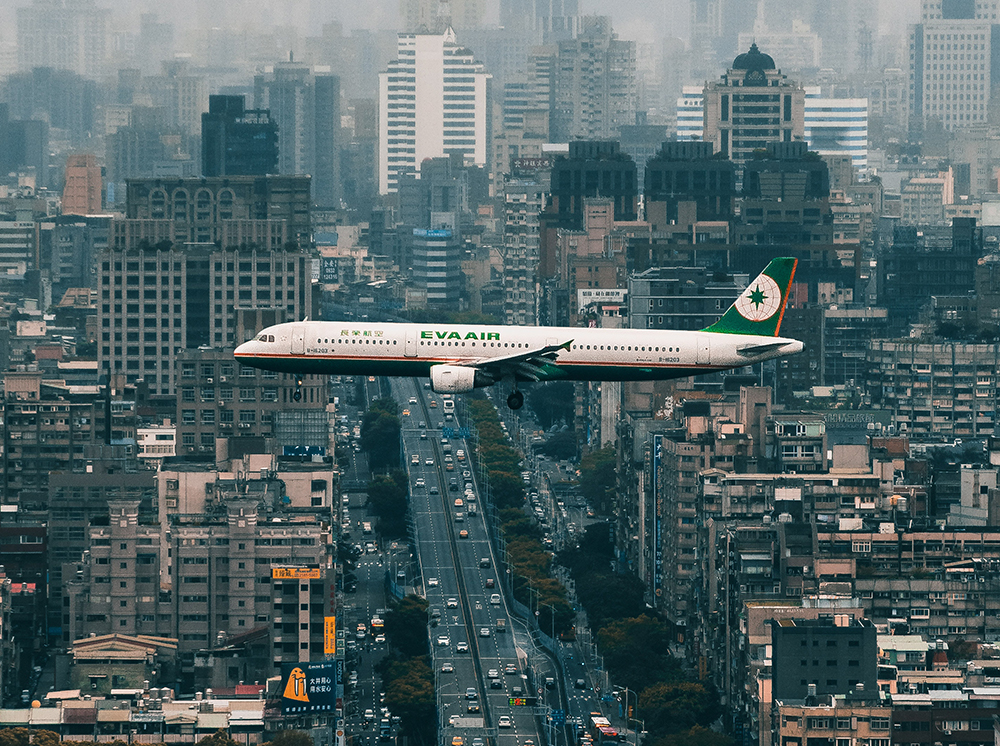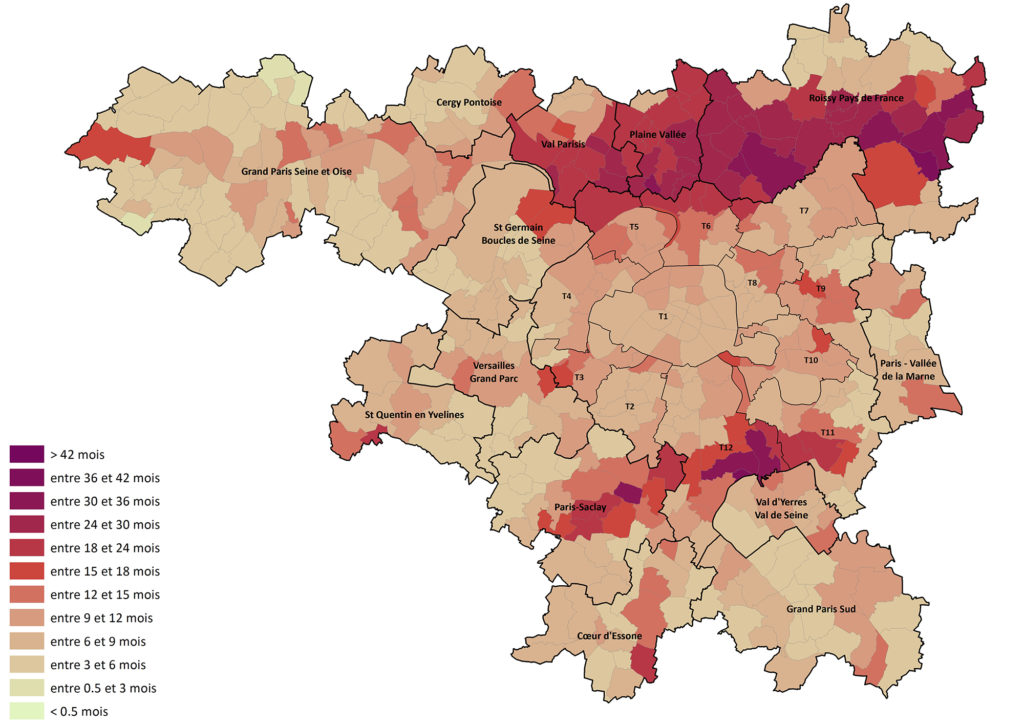Context: Quieting the air transportation
To the preceding section: About
The last decades have seen a significant increase of air traffic, together with a densification of urbanism, especially in the surrounding of transportation nodes such as airports. These trends have highlighted the impact of air-traffic noise on health: besides having obvious effects on sleep disturbance, it severely affects the health of populations.

A 2019 report by Bruitparif, a nonprofit French organization working on environmental-noise monitoring in the surroundings of Paris, unveiled the impact of air-traffic-related noise in terms of loss of healthy-life months for the population. It clearly shows that the number of healthy-life months lost per individual is much higher in the zones surrounding Roissy and Orly airports, exceeding 3.5 healthy-life years reduction in these areas (see the 2 dark red areas on the illustration below). These health impacts therefore represent non-negligible costs for the society.

Moreover, a 2016 report published by ADEME (Agence de l’environnement et de la maîtrise de l’énergie, a French public company active in the implementation of public policy towards the environment), highlights the economic impact of air-traffic noise on communities. More specifically, the report intends to estimate the financial cost in terms of real estate depreciation affecting the habitations in the surroundings of airports.
Following this methodology, the estimated total social costs of noise amount 55 billions Euros per year in France, among which 20 billions are due to transportation (air transport representing almost 50% of these costs).
National and international authorities are becoming aware of this huge societal issue, yielding more stringent regulations, especially with respect to air-traffic-related noise pollution. In this context, aircraft manufacturers and suppliers have prioritized aircraft noise reduction in their agenda. The numerous research projects funded by the European Union since the early 2000’s testify to this trend.
However, climate changes issues drive the whole technological developments of the aircraft industry, and the efforts undertaken to reduce greenhouse gases emissions are likely to worsen noise reduction challenges. This is especially the case for the next generation of aircraft engines, the Ultra High Bypass Ratio (UHBR) Engine architecture.
To the next section: Challenges
